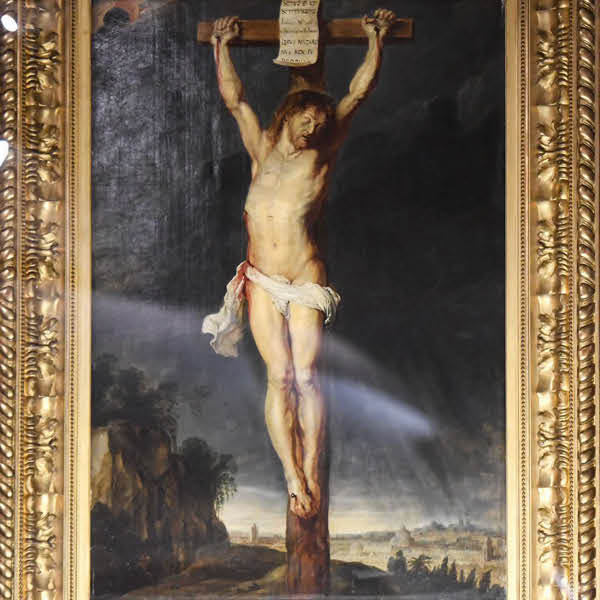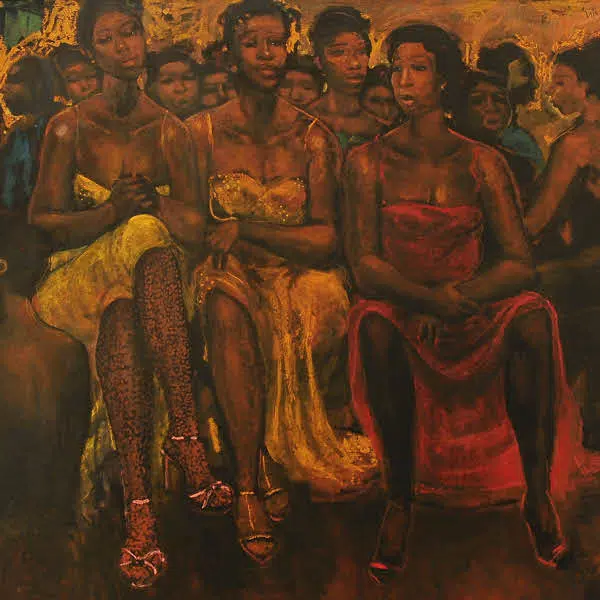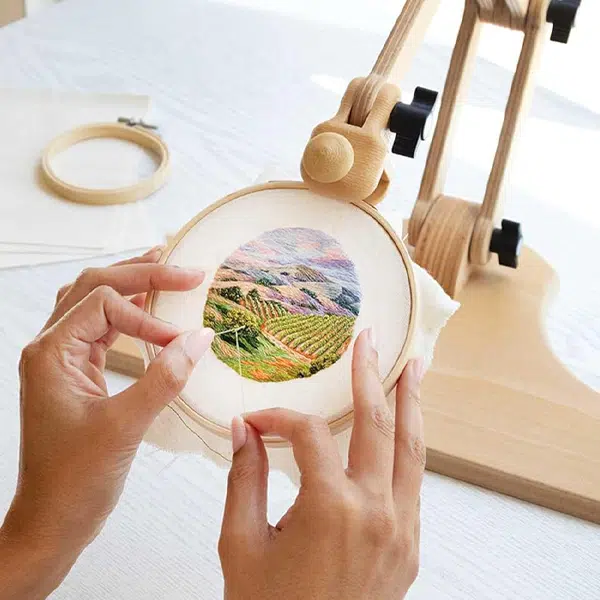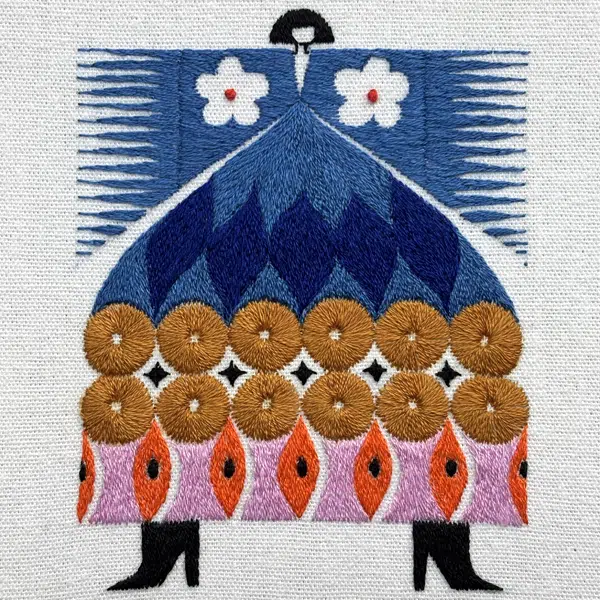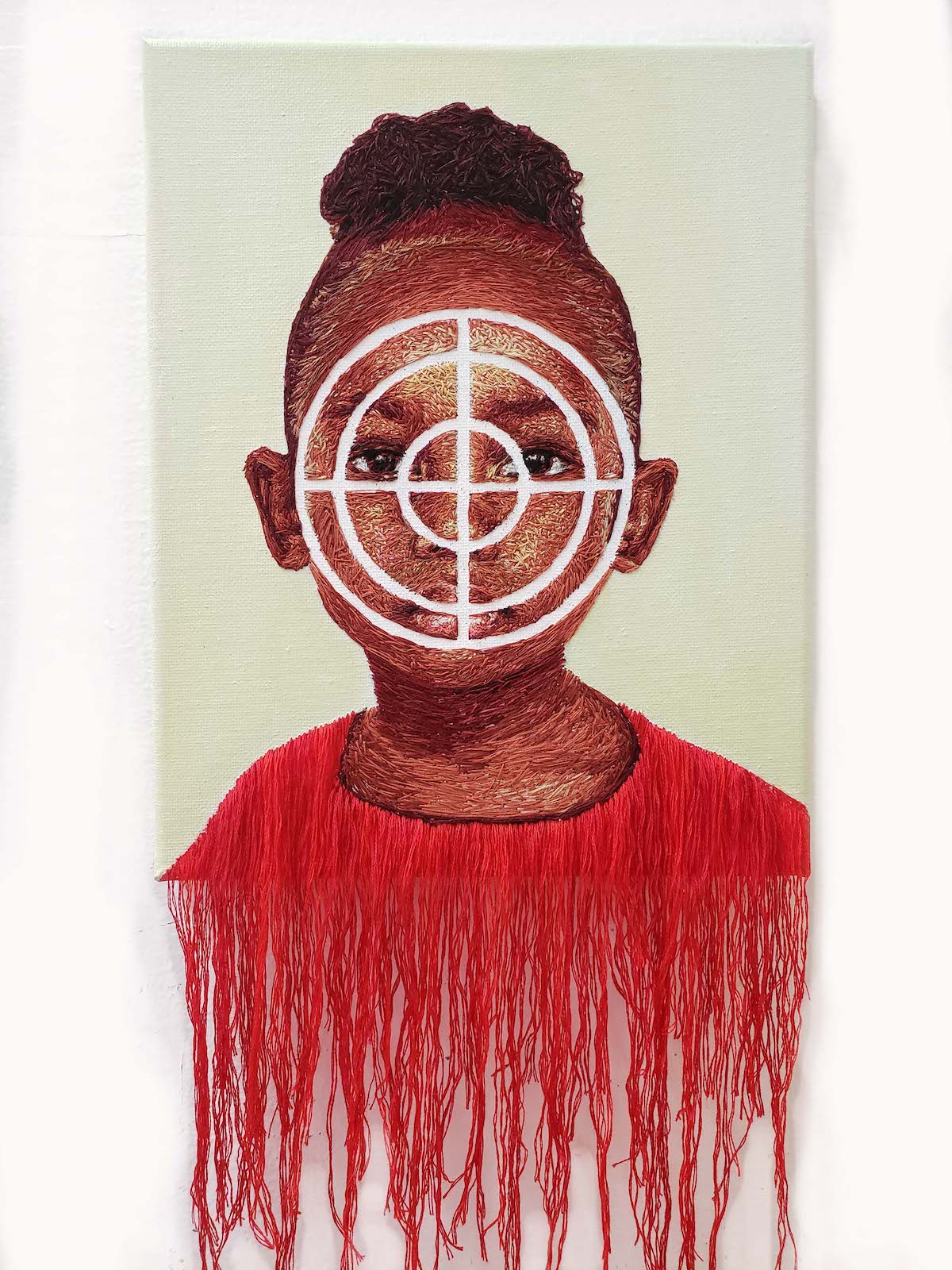
“Shooting Range”
Artist Nneka Jones creates portraits highlighting women of color who have suffered injustices in the world. Some abuses are overt while others are ingrained in the fabric of our society and therefore often go overlooked. But to the people in her mixed media and embroidered portraits, the effects are traumatic. The Black women and girls depicted in Jones’ work are victims of sexual abuse and sex trafficking.
Circular elements are a bold design motif in Jones' work; but, more importantly, they are powerful symbols. We can recognize their meaning in an instant. The concentric circles are portrayed in different ways. Some of the pieces have a shooting range target that lies in the center of children’s faces. This placement comments on how young girls of color are seen as targets.
Other works, part of Jones’ Targets Variegated series, use a bulls-eye to “draw on social issues of women of color being seen as sexual, physical, emotional and verbal targets.” While they are victims, Jones decided to imbue the symbol with an alternative meaning as the series grew. The motif is a way to celebrate the essence of these Black women who have carried on despite living in a dangerous world.
We had the opportunity to speak with Jones about her powerful portraits—as well as what’s next for the recent college grad. Read on for My Modern Met's exclusive interview.

“Colorblind Shooting Range”
You “paint without paint” and incorporate a lot of embroidery into your work. What was the inspiration for this use of combining these two materials?
Creating artwork using embroidery was never even a thought in my mind over a year ago. I would always tell anyone that asked me that I wanted to be an artist, and a painter to be exact. After making the decision to leave my family and friends and pursue my art studies in the United States, I found my new home at the University of Tampa as an art major. It was in my third year that I had taken an experimental painting class that had challenged the students to go beyond the surface of the canvas.
My professor wanted us to create a painting without using paint, and I didn’t know how I was going to do that, especially with the irony of me wanting to become a painter. I researched different materials for a few hours, but embroidery thread seemed to be the most interesting. I knew I was going to attempt to do a portrait, but I decided to use myself just in case anything went wrong and to avoid offending anyone if it did. So yes, my first painting, without using paint, was a simple self-portrait and the only place that I had used paint was the background; all of my features, eyes, nose, lips and my head wrap and jewelry were all made of thousands of hand stitches.

“Yellow Light”
Embroidery is a meticulous art. When creating your portraits, how has the act of the “slow craft” made you consider the subjects you're depicting?
The subjects for my artwork are always carefully planned and researched before I create the actual work of art. I consider myself an activist artist, one who uses her art to communicate with viewers and demanding some kind of reaction, emotion, or conversation. Once I begin stitching this image, I begin telling a story. I always start with the eyes of the individual and work my way outward to develop the figure. This helps to remind me of why I am creating the piece and with each additional stitch and every hour that I spend working on the pieces, it is symbolic of the long hours, days, weeks, months, and years that these women and girls have had to endure pain and injustice.
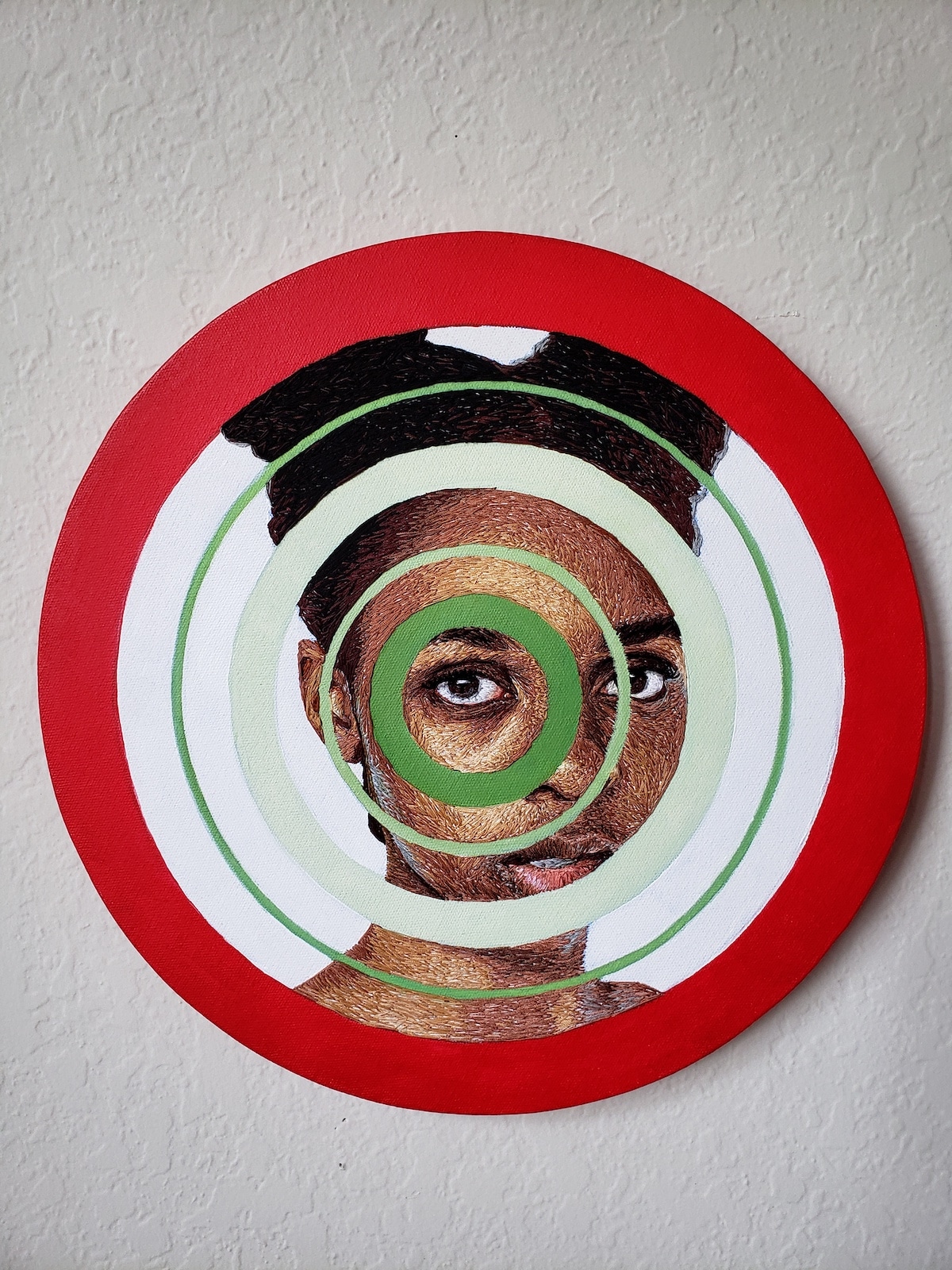
“Green Light”

“Green Light” (Detail, work in progress)
You use the bulls-eye as a way to symbolize a target—in this case, girls and women of color being seen as one. How does the symbol change throughout your work, depending on who it is is affixed to?
Initially, when I started working in embroidery and other mixed media, the bulls-eye target symbol emphasized victimization in each piece. I wanted the viewer to look directly into the eyes of the young girl and experience the innocence in their eyes compared to the harsh realities that they face, emotionally, physically, sexually. I began with the simple symbol stamped on their faces and began shifting to the incorporation of other symbols to communicate the same message. This included the elimination of the bulls-eye and the use of bullet holes, a dartboard, and colorblind testing.
However, the more work I created, was the more I realized that while I wanted my work to raise awareness about these social injustices involving sexual abuse of young women and girls, I wanted more for my work to stand against it. I shifted from “creating and depicting” these victims to capturing the essence of women and girls that have had enough and were now reclaiming what was theirs to begin with: their bodies, their opinions, their beauty. This led to the creation of the Targets Variegated series, my most recent embroidery work, and the last work made at The University of Tampa.
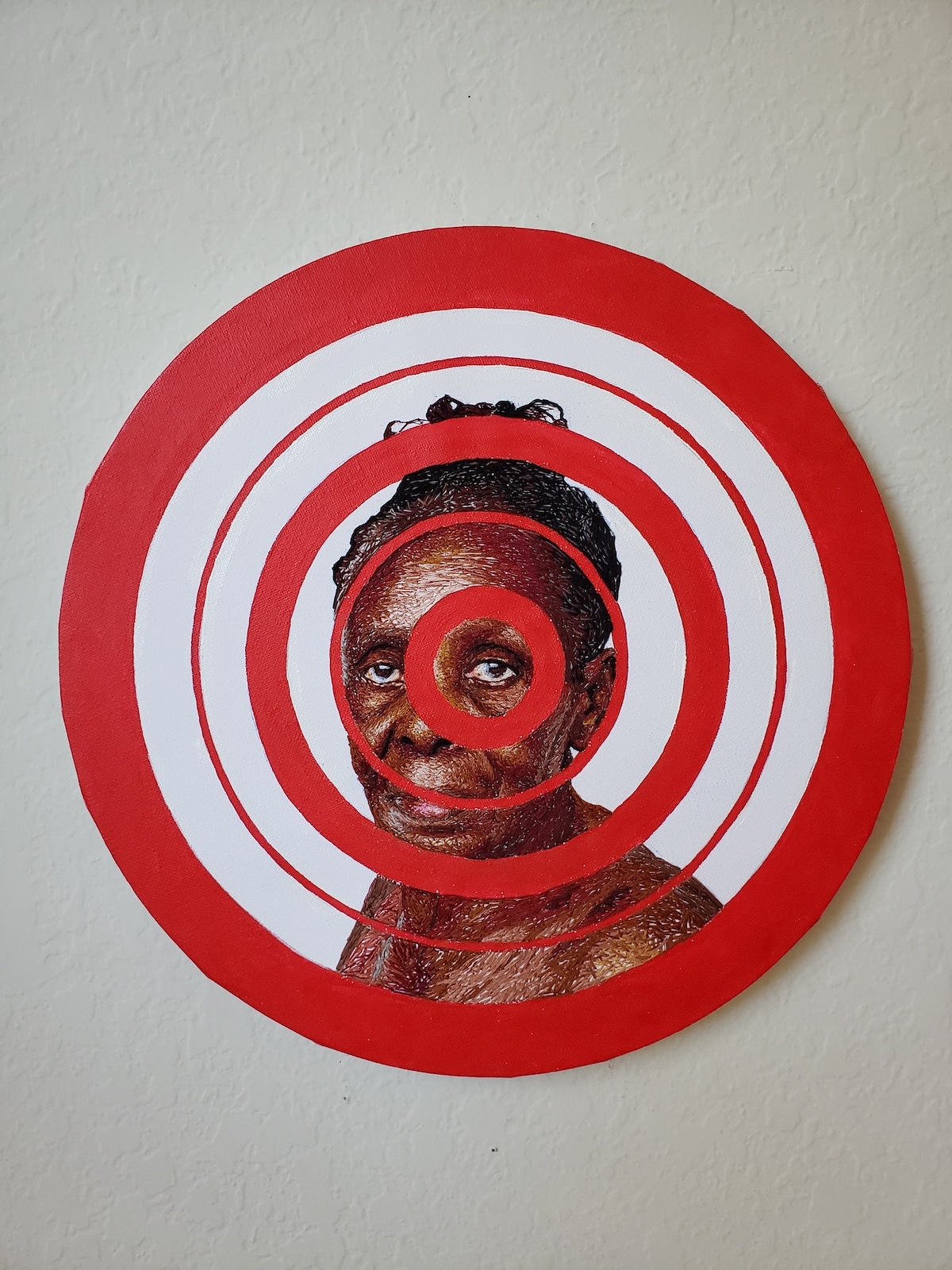
“Red Light”
Traffic lights also inform your work. Can you describe their meaning within your pieces?
The Targets Variegated series, also known as the Traffic Light series, is used to stop viewers in their tracks and demand their attention, doing just that of a traffic light. I use the colors, red, yellow, and green, each highlighting a different woman or young girl of various ages. This series was meant to affirm that women and children of all ages are affected, not just young girls. It is one in which I develop figures with the assertion and sense of authority that contrast with the innocent faces captured in my earlier series. They are no longer victims. They are here to inform you and everyone else that there are issues of sexual, emotional, and physical abuse that exist in society but it needs to stop now. Hence, the target symbols are no longer dominant in this series and are more so used to add depth and vibrancy with the bold colors.
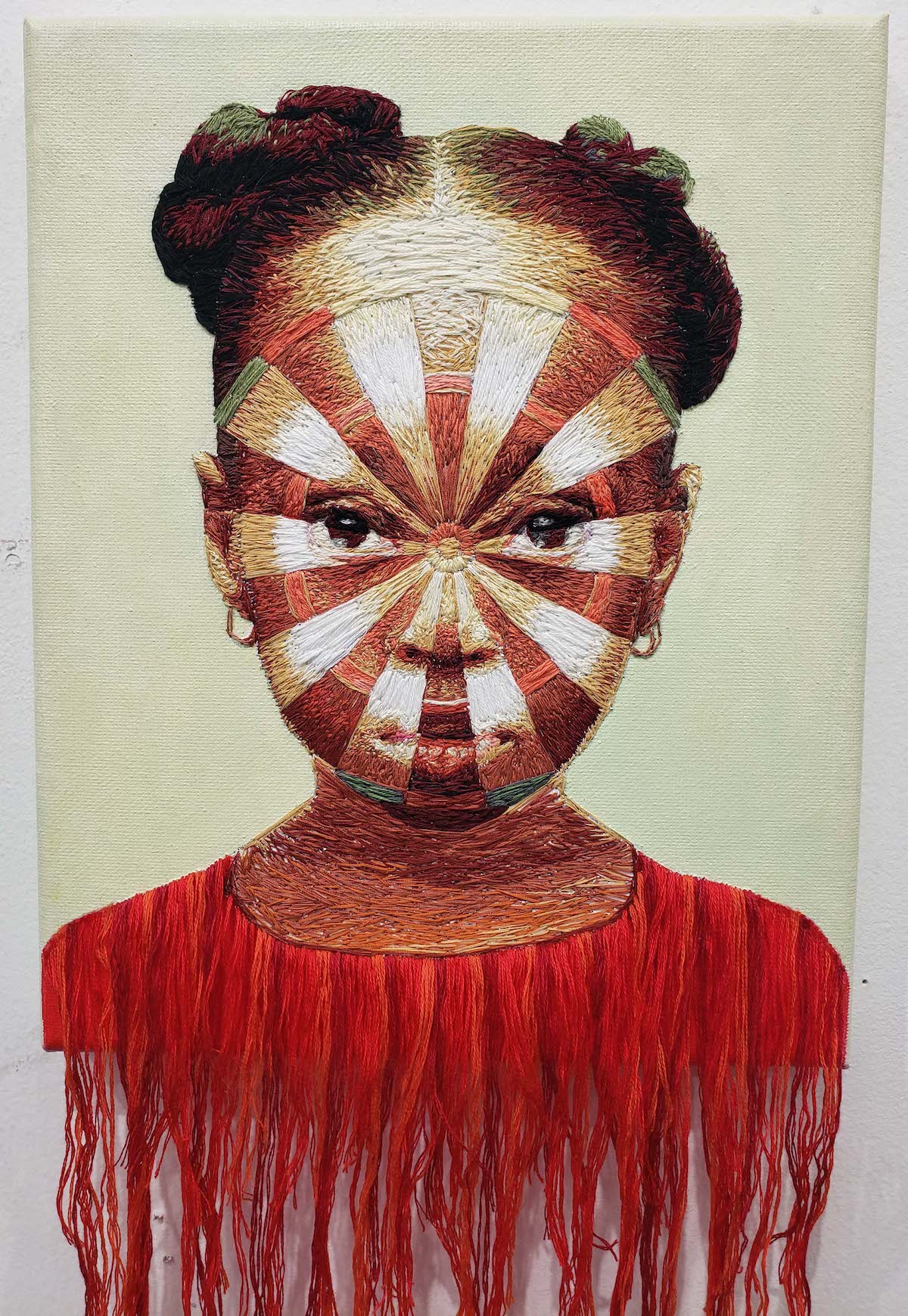
“Dartboard Target”
What do you hope viewers take away from your work?
I hope that viewers are able to look beyond the textural surface of the canvas and the fact that the portraits are hand embroidered. I want them to really think about the symbols used, the facial expressions, colors, composition, and how this can relate to the world we are living in now. I want them to ask questions, start conversations about it, and investigate it beyond just being a piece of artwork.
What are you working on now? Anything you can share with us?
I am currently working on more hand-embroidered portraits and although I am not able to share images right now, I am excited to see the direction that my work will take since I have graduated and how it will develop within the coming years.
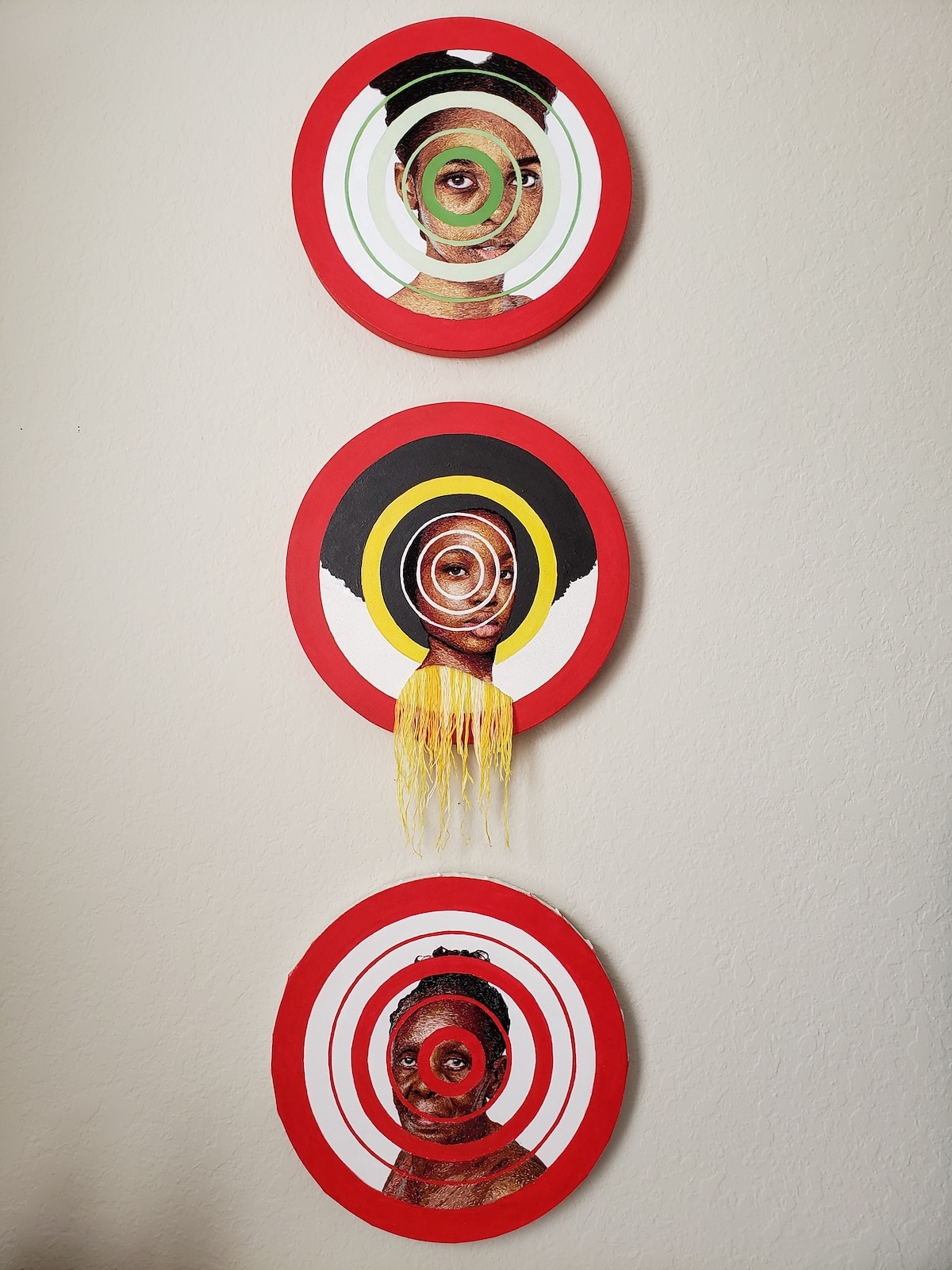
“Targets Variegated” Series
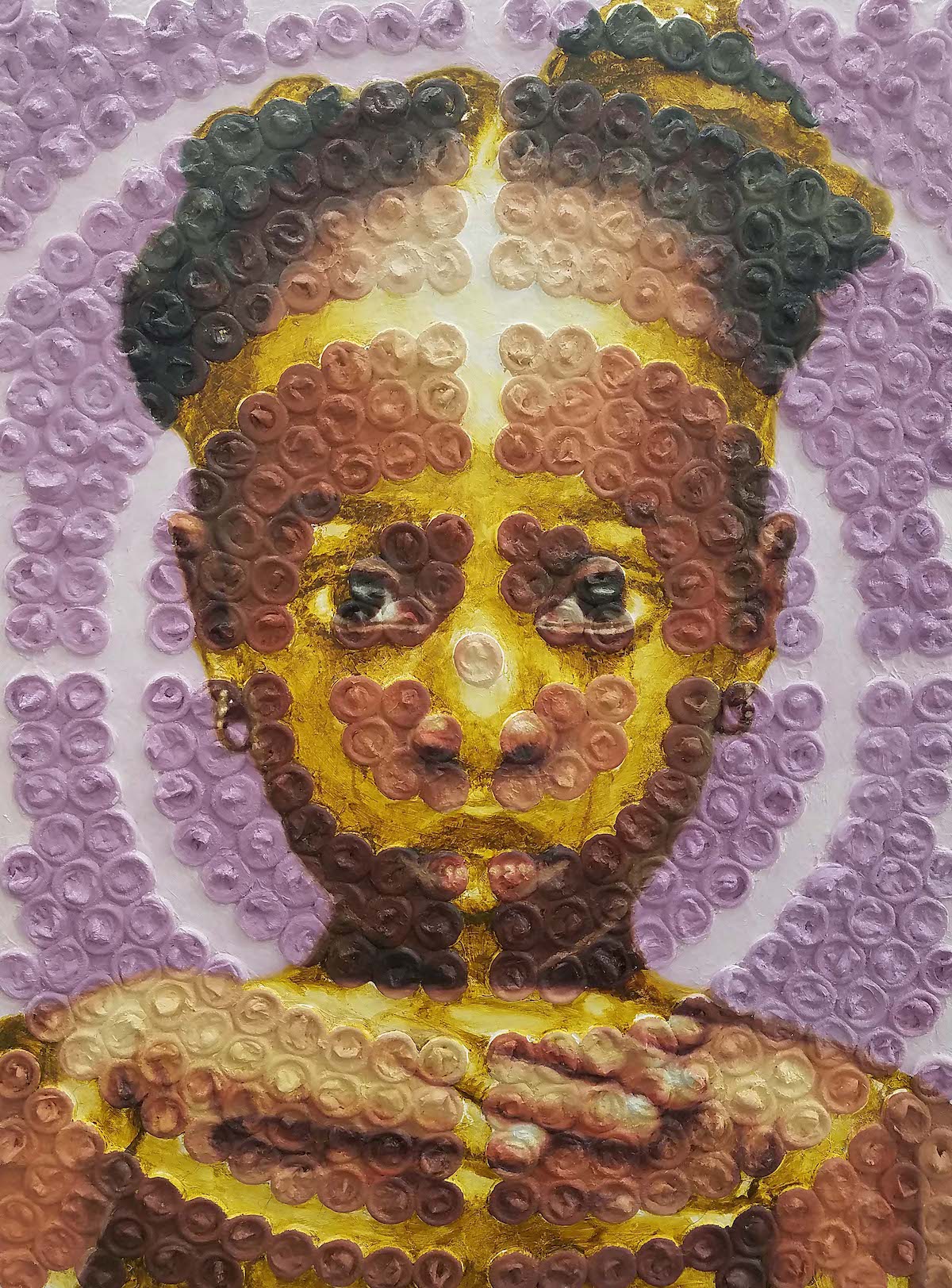
“Target” (comprising condoms and painting)
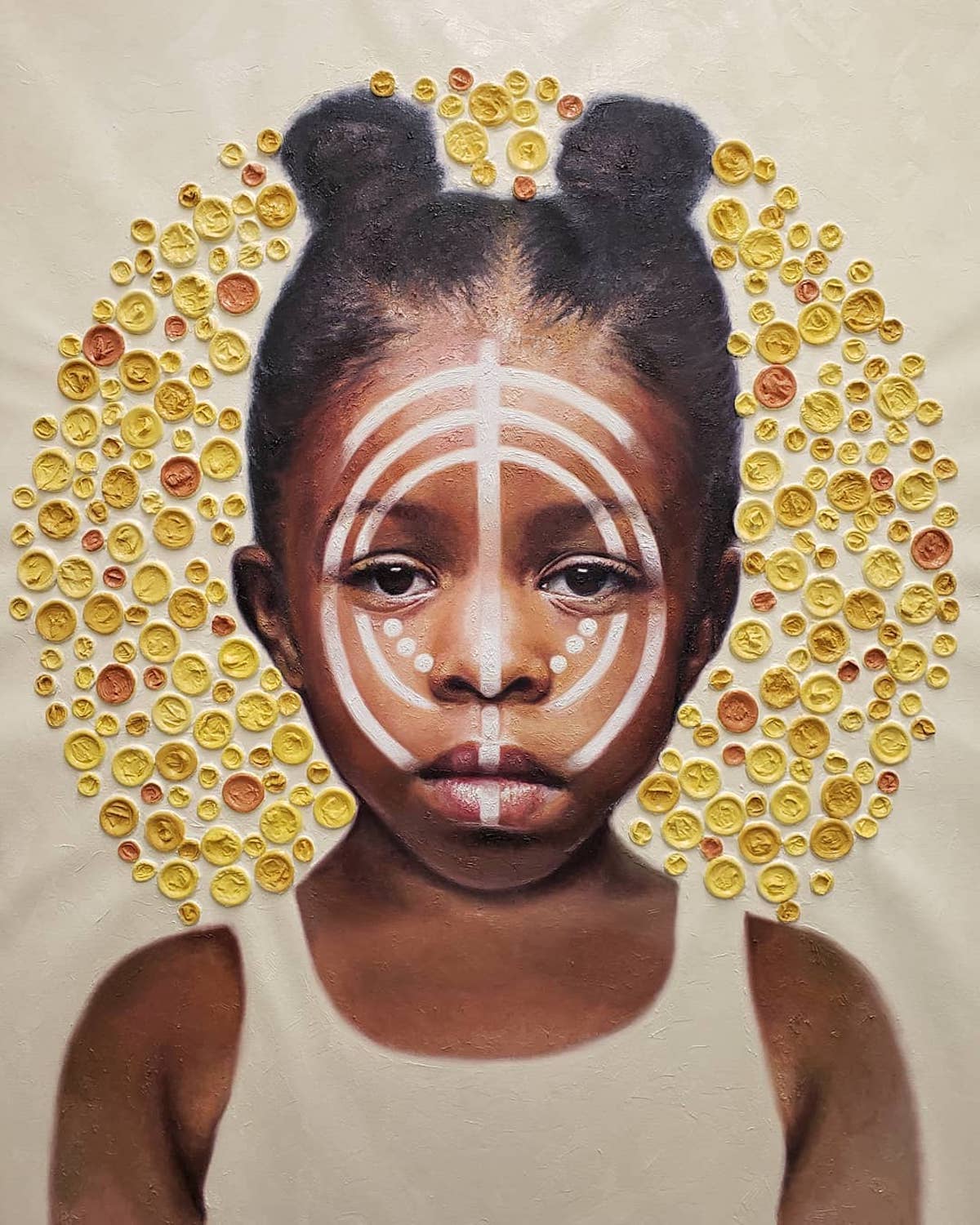
“Colorblind Shooting Range” (comprising condoms and painting)
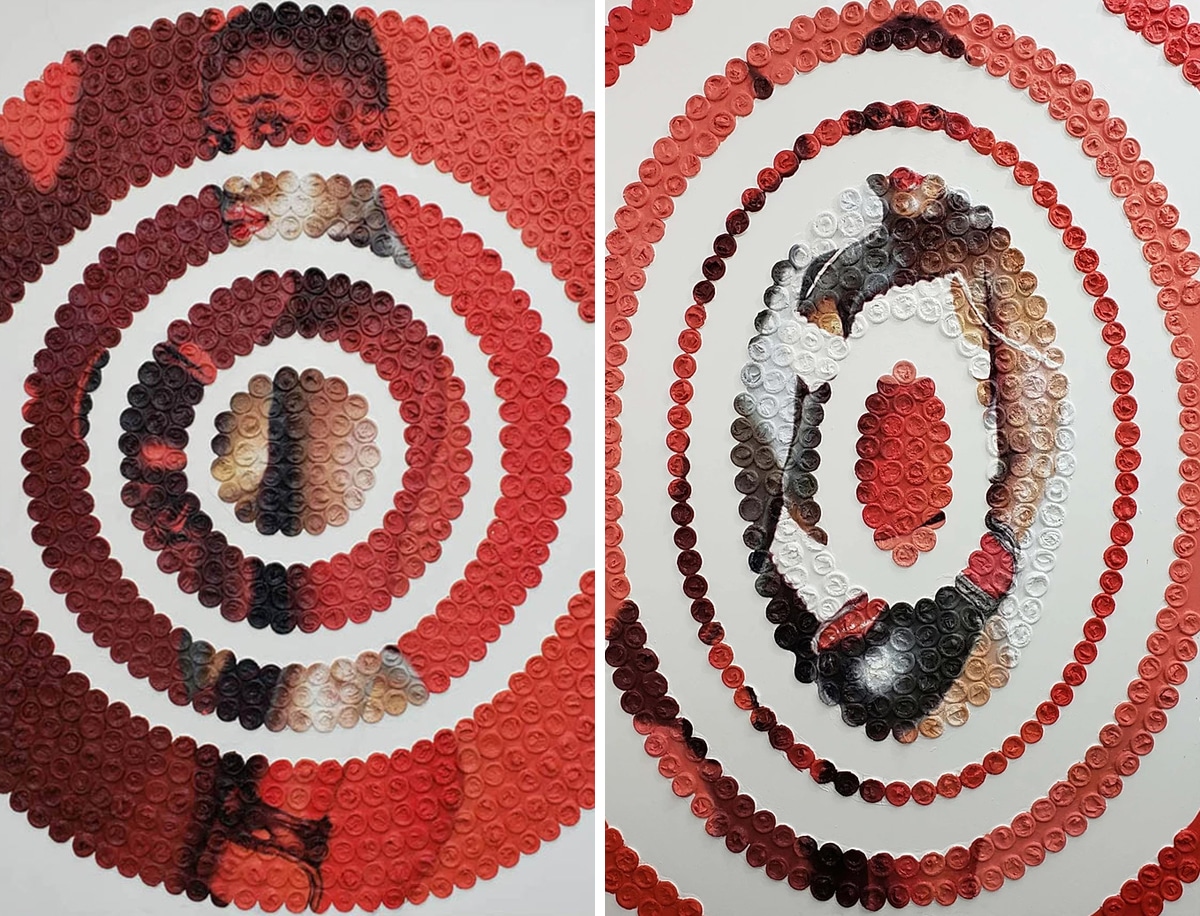
“Red Light District” | “Red Light District II” (comprising condoms and painting)

















































































